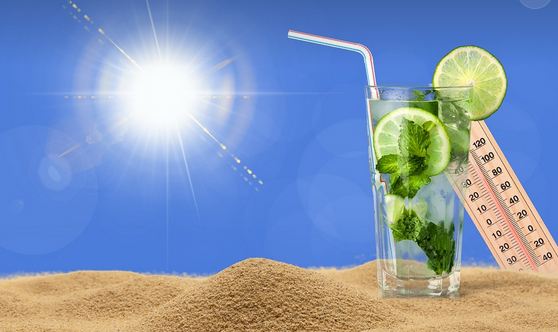Heat stroke

Heat stroke is a severe heat-related illness characterized by a body temperature of 104°F (40°C) or higher. It typically occurs as a result of prolonged exposure to high temperatures, often in combination with dehydration.
Symptoms of Heat stroke
- High body temperature
- Rapid pulse
- Rapid breathing
- Throbbing headache
- Dizziness
- Nausea and vomiting
- Confusion or disorientation
- Unconsciousness
Heat stroke is a medical emergency and requires immediate treatment. If you suspect someone has heat stroke, it’s important to cool them down quickly by moving them to a shaded or air-conditioned area, removing excess clothing, and applying cool water or ice packs to their body. You should also seek medical attention immediately. Failure to treat heat stroke promptly can lead to serious complications, including organ damage and even death.
Prevent Heat stroke
Avoiding heat stroke involves taking proactive measures to stay cool and hydrated, especially during hot weather or when engaging in physical activity. Here are some tips to help prevent heat stroke:
- Stay Hydrated: Drink plenty of fluids throughout the day, even if you don’t feel thirsty. Water is the best choice, but you can also consume electrolyte-rich drinks to replenish lost minerals. Avoid excessive alcohol and caffeine consumption, as they can contribute to dehydration.
- Dress Appropriately: Wear lightweight, loose-fitting clothing in light colors that reflect sunlight and heat. Opt for breathable fabrics like cotton, which allow air to circulate and sweat to evaporate, helping to keep you cool.
- Stay Cool Indoors: Seek out air-conditioned or well-ventilated indoor spaces during the hottest parts of the day, especially if you don’t have access to air conditioning at home. If you need to be outside, try to schedule activities during the cooler morning or evening hours.
- Take Breaks: If you’re engaged in outdoor activities or physical exertion, take frequent breaks in shaded or cool areas. Pace yourself and listen to your body’s signals. If you start feeling overheated or fatigued, take a break and rest.
- Use Cooling Measures: Take advantage of cooling measures such as fans, misting fans, or cool cloths to lower your body temperature. Applying cold packs or taking a cool shower can also help reduce body heat.
- Avoid Excessive Physical Exertion: Limit strenuous activities during hot and humid weather, especially if you’re not acclimated to the heat. If you must engage in physical exertion, do so gradually and take frequent breaks to rest and hydrate.
- Protect Yourself from the Sun: Wear a wide-brimmed hat and sunglasses to shade your face and eyes from direct sunlight. Apply sunscreen with a high SPF to protect your skin from sunburn, which can impair your body’s ability to cool itself.
- Check on Vulnerable Individuals: Keep an eye on children, elderly adults, and pets during hot weather, as they are more susceptible to heat-related illnesses. Make sure they stay hydrated and cool, and never leave them in a parked car, even for a short period.
- Be Mindful of Medications: Some medications can increase the risk of dehydration or make you more sensitive to heat. If you’re taking medication, consult your healthcare provider about any potential side effects related to heat exposure.
